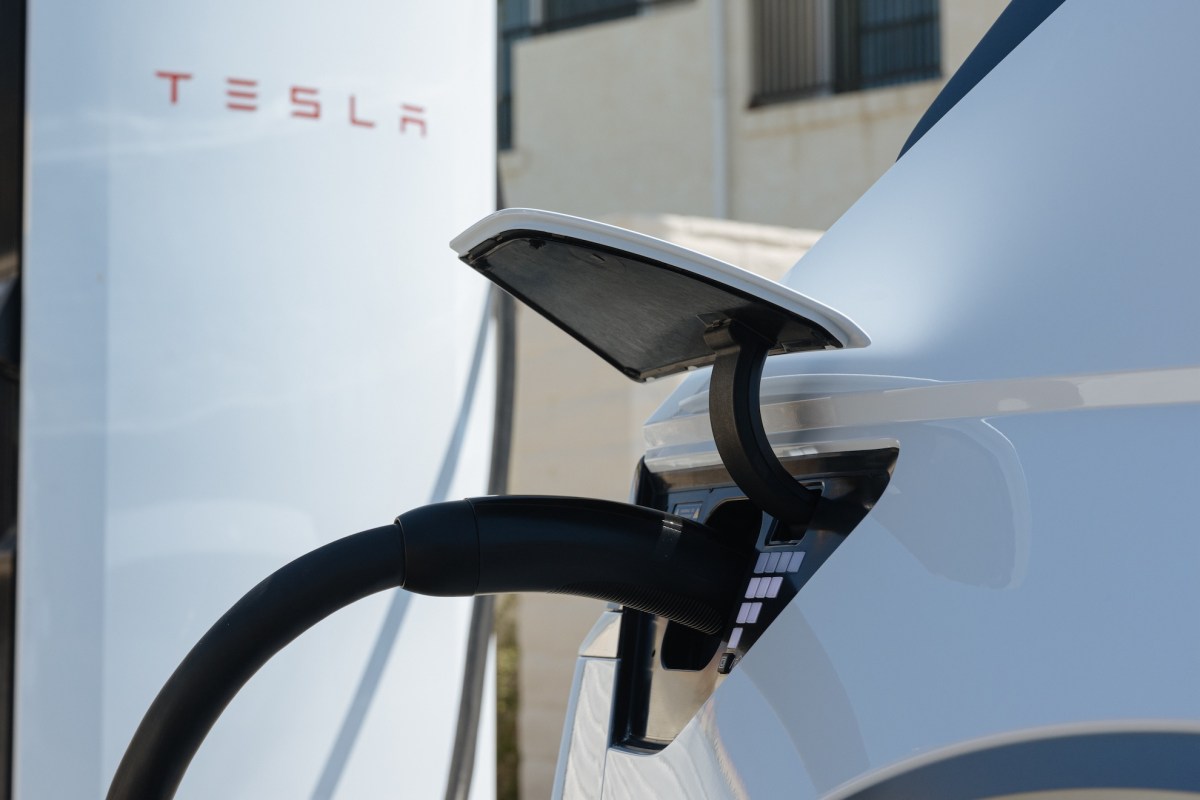As I navigated the 2025 Hyundai Ioniq 5 into the last available spot at a Tesla Supercharging station in Palm Springs, I thought to myself, ‘Lucky me.’ The electric vehicle didn’t necessarily need a charge, but I wanted to test how well it would perform with Tesla’s North American Charging Standard port.
The experience revealed a noticeable gap, quite literally. Although Hyundai shouldn’t bear all the blame, it did illustrate that a seemingly good idea doesn’t always translate to real-world success. For instance, when I reversed into the parking spot and opened the charge port on the passenger-rear quarter panel, I had to retrieve the charging cord from a cabinet located on the driver-side of the car.
However, I soon realized that the cord didn’t quite reach. My options were to either wait for another Tesla to vacate its space and use that charging cable, taking up two spaces, or use the in-car navigation to find a CCS-equipped charging station and utilize the adapter provided with the car. Since I had ample battery life, I decided to continue with my day, but others might not be as fortunate.

The Combined Charging System (CCS) was the standard in North America, utilized by every automaker except Tesla, which developed its own port and charging station known as the North American Charging Standard (NACS). However, in May 2023, Ford reached an agreement with Tesla, allowing Ford EV owners to access over 12,000 Tesla Superchargers across the US and Canada. General Motors followed suit, and within six months, nearly every automaker had struck a similar deal with Tesla.
The 2025 Hyundai Ioniq 5 is one of the models that has adopted the NACS charging tech. While it’s not entirely Hyundai’s fault, the Ioniq 5’s charging port location on the rear passenger side has always been a limitation. Tesla suggests that the issue should be resolved with the rollout of its V4 charging stations featuring longer cables, but the company also encourages vehicle manufacturers to standardize charge port locations.
Buyers of the 2025 Hyundai Ioniq 5 will have better luck finding a CCS station and using the provided adapter. According to Hyundai, the Ioniq 5 can charge from 10% to 80% in about 20 minutes at a CCS charger, whereas the same fill-up will take up to 30 minutes at a NACS charger.
Hyundai is offering a $400 charging credit or a free ChargePoint home charger with the purchase of an Ioniq 5. Additionally, owners of older Hyundai EVs with native CCS ports can receive a free NACS adapter through the MyHyundai owner portal starting in March. Hyundai owners will also have access to the planned Ionna charging network, which is expected to have 30,000 NACS and CCS charging points by 2030.
2025 Hyundai Ioniq 5: Bigger Batteries, More Range, New Trim
The 2025 Ioniq 5 may look similar to its previous models, but it features some key differences. The standard range battery has increased to 63 kWh, while the extended range battery sits at 84 kWh. Depending on the combination of drivetrain, battery, and trim, the range can vary from 245 miles to 318 miles for a rear-wheel drive Ioniq 5 with the larger battery.
The power output also varies, starting with 168 horsepower and 258 pound-feet of torque, growing to 225 ponies in the extended range battery. The most powerful setup has 320 horsepower and 446 pound-feet of torque for all-wheel drive cars with the bigger battery.
Tech Upgrades
 Source Link
Source Link




